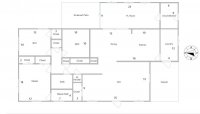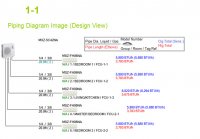Jmichaelp
New Member
Hi, attached is the current layout of my 1964 ranch house in Jacksonville, FL. It's currently serviced by a 15- year old, 3.5 ton, 11 SEER heat pump. The Florida room has an in-wall unit. The original ducts in the attic are sheet metal with original insulation. The attic insulation is supposed to be R-9 (according to the inspection) but I doubt it. The walls are stick frame, not insulated with 50/50 brick/siding. The windows are 2-pane, low e. The roof pitch is 2.1 so limited attic space, which would make new ducts expensive to install (about $5k).
I intend to change the bathroom layout to make them both larger, move the front door North to create a better entry, get a new roof with radiant barrier sheathing & re-insulate the attic (air sealing if I can).
I was going to get a conventional unit, but a couple of neighbors said how much they love their mini-splits so I started looking into that. I thought I'd try to understand the design before I get any bids. I was thinking about a ducted unit to supply the three bedrooms (with a tucked away entrance would I need separate duct for the master bath?), a ceiling cassette between the dining room/den & a wall unit in the Florida room. I did room-by-room calculations using an online tool & came up with 22k cooling & 29k heating loads for the entire house.
Does this look reasonable? I'd appreciate any input. Thanks.
I intend to change the bathroom layout to make them both larger, move the front door North to create a better entry, get a new roof with radiant barrier sheathing & re-insulate the attic (air sealing if I can).
I was going to get a conventional unit, but a couple of neighbors said how much they love their mini-splits so I started looking into that. I thought I'd try to understand the design before I get any bids. I was thinking about a ducted unit to supply the three bedrooms (with a tucked away entrance would I need separate duct for the master bath?), a ceiling cassette between the dining room/den & a wall unit in the Florida room. I did room-by-room calculations using an online tool & came up with 22k cooling & 29k heating loads for the entire house.
Does this look reasonable? I'd appreciate any input. Thanks.



